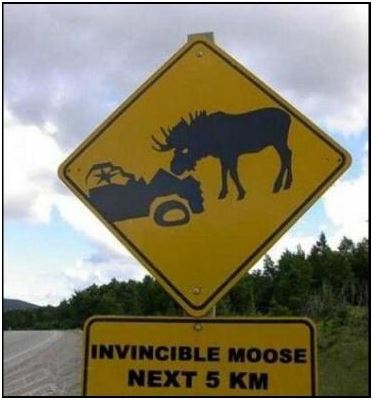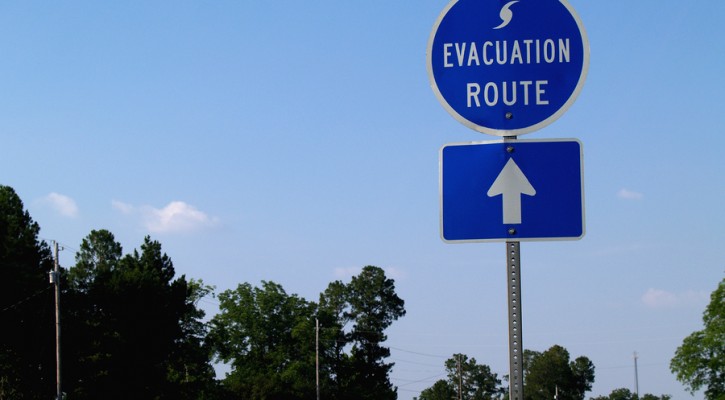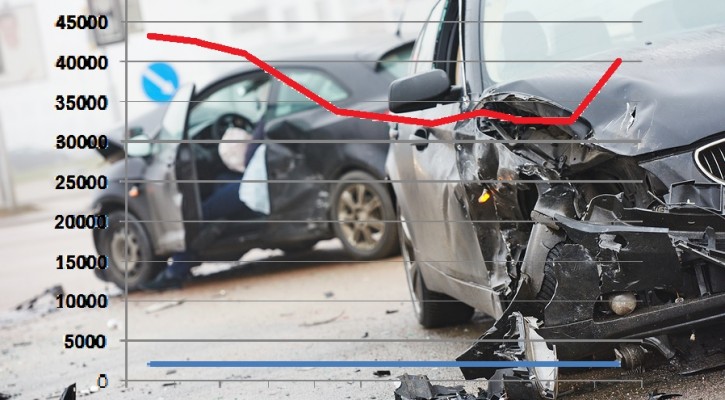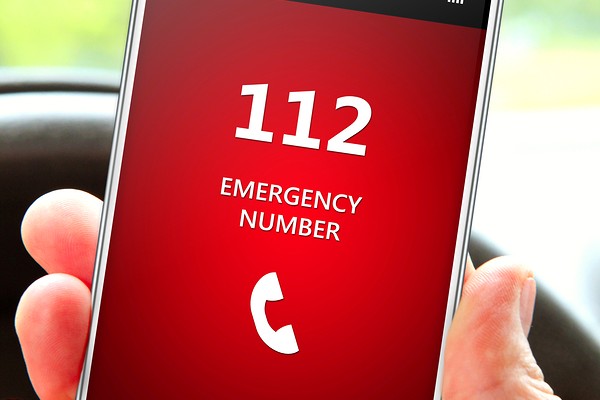Category Archive: Safe Driving

Watch for Deer On The Road
October 21, 2015
It’s that time of year again when it’s important for drivers to watch for deer on the road. The term “deer” also includes moose, elk, and caribou in those parts of the country where they live.
Deer tend to congregate along the sides of the roads during the fall mating season from October through the end of the year and are mostly encountered at dawn and dusk when it’s hardest to see them.
According to the Washington State Department of Transportation, your chances of hitting a deer are greatest:
- When there aren’t a lot of big trucks on the road. Researchers feel that the presence of large trucks on the road lead car drivers to be more cautious and alert. The noise created by the trucks may also help to drive the deer away.
- When the speed limit is above 50 mph, giving drivers less time to react.
- When there are fewer lanes.
- When the median is 6 feet wide or narrower.
Your chances of being involved in a collision with a deer on the road also depends on the state in which you live. According to data compiled by State Farm Insurance, a Florida driver’s chances of hitting a deer are 1 in 930 compared to West Virginia where a driver has a 1 in 44 chance of an encounter.
Most often, your first hint of a deer on the road will be the light reflected from their eyes.
Once you see one, slow down. You can count on more deer being close by but you can’t count on how they will behave as your vehicle draws near..
Since deer tend to forage at night, their eyes have evolved to gather more light. Once those large eyes are hit by the beams from a car’s headlight, it results in an explosion of light that blinds and immobilizes the deer (the deer in the headlights effect).
Honking your horn may frighten the deer and cause it to run but it could just as easily run into the roadway. Honking your horn is only a good choice if you’re driving slowly enough that a collision won’t do much damage.
If a deer runs into the road, don’t give into the temptation to swerve in hopes of avoiding it. Swerving may cause you to lose control of your vehicle leading to an even worse crash. Sadly, it’s often a safer choice to hit the animal that has run out into the road rather than swerving to avoid it.
In 2013, four drivers were killed and 465 were injured in crashes involving animals on Florida roads. Nationwide in 2013, according to the Insurance Information Institute, there were 191 deaths caused by collisions with animals.

Hurricane Or Tropical Storm – Plan Ahead
August 28, 2015
While we’ve dealt with a tropical storm or two over the past few years, Florida hasn’t been hit by a hurricane in ten years. That means that a lot of people may have forgotten what it’s like to go through a hurricane and may not realize the full dangers a storm like that can pose. It’s too early to tell whether the current tropical storm Erika may develop into a hurricane but even if it remains as a tropical storm, the high winds and torrential rains can still be deadly and current models have it passing over Florida or just off the coast.
Leave Early!
If you chose to evacuate ahead of the storm, leave early! Those who remember evacuating the state as hurricane Floyd neared in 1999 may remember the nightmare on the roads as 2.6 million people tried to evacuate from coastal Florida, Georgia, and the Carolinas. At that time, Florida emergency management people were ill prepared for the numbers of people evacuating and traffic was stop-and-go from south Florida to central Georgia. One lesson learned from that storm was to close all lanes of the interstates to inbound traffic and open all lanes to outbound traffic going in one direction only.
For those in coastal areas, leaving early is critical because there will come a point in the storm when all bridges and causeways will be closed due to high winds and people who delay leaving will be stuck where they are.
Plan Ahead
If you plan to evacuate, plan ahead. With heavy stop-and-go traffic on the interstates, you may spend hours traveling between exits. To prepare for that:
- Fill your tank with gas before you leave and don’t let the tank go below half full if you can avoid it.
- Gas stations, restaurants, and stores may be overwhelmed and quickly run out of supplies.
- Take water and snacks with you.
- Withdraw cash ahead of time; with power outages, ATMs may be out of service.
Cell phone service may be disrupted. If members of your party in separate vehicles get separated:
- Select a place to meet ahead of time.
- Select an out of town family member to contact and let them know you’re OK.
Beware of flooding; especially after the storm has passed.
Even after the worst part of the storm has passed, flooding will be an issue as water rushes into creeks and rivers and they start to rise. In recent years, tropical storm flooding has washed out roads and bridges.
If there’s standing or rushing water over the road:
- You can’t tell what the road may be like underneath; it could be washed away or it could collapse under the weight of your vehicle. Turn around and find another route.
- Less than an inch of water can cause a driver to lose control.
- As little as six inches of rushing water has enough force to push your car off the road.
- Your car can float in as little as two feet of water and you could be washed away into a flooded stream or river.
Be Patient
Traffic in the evacuation zones will be heavy and drivers will be stressed:
- Remember that no one has the right-of-way; you can only give up the right-of-way to another driver.
- If another driver insists on taking the right-of-way, give it to them; it’s not worth getting into a fight over a few seconds of your time.
- If you encounter a road rage situation, do not confront the other driver. Keep your doors and windows shut and try to exit the situation as quickly as possible.
- Remember that emergency services will be overwhelmed and you may not be able to call 911 for help.
For help in planning, visit: Get A Plan

Motor Vehicle Deaths Are On The Rise
August 18, 2015
A new report by the Statistics Department of the National Safety Council shows that motor vehicle deaths are on the rise and the numbers have increased significantly over the past year. The report covers the first six months of 2015 and shows a fatality increase of 14 percent over the same period in 2014.
According to the report, there were 18,630 motor vehicle deaths in the US between January and June of this year. The report’s authors say that, if the trend continues for the rest of the year, the total number of motor vehicle deaths could exceed 40,000 for the first time in eight years.
We normally quote traffic figures from the National Highway Traffic Safety Administration (NHTSA) and the figures between the National Safety Council and NHTSA will differ because NHTSA only counts traffic deaths that occur within 30 days of the crash while the National Safety Council counts both traffic and non-traffic deaths that occur within one year of the crash. Another difference is that NHTSA normally takes more than a year to compile and publish its data so there won’t be any data for 2015 for some time to come. However, early 2014 figures published by NHTSA in January show a possible trend to support the National Safety Council figures.
According to NHTSA data, the rate of motor vehicle deaths in 2014, statistically, showed no real change from the 2013 death rate. While there were 44 fewer deaths in 2014 than in 2013, that only represented a change of 0.1%. The death rate for the first three quarters of 2014 showed a small decline but the last quarter of 2014 showed an increase of five percent over the same quarter in 2013.
The National Safety Council researchers feel that the increase in motor vehicle deaths are likely tied to lower gas prices and the growing economy. In 2008, when the economy started to crash, motor vehicle deaths fell by ten percent over the previous year, according to NHTSA figures. After a high of 43,443 motor vehicle deaths in 2005, the death rate fell to a low of 32,367 deaths in 2011 at the height of the recession; a difference of 34 percent.
Many traffic safety experts have warned that one indicator of a strengthening economy would be an increase in motor vehicle deaths. The improved economy along with low gas prices mean more people are on the road both for work and for pleasure.
One saving grace in all of this data is that newer cars are much safer and, while the number of crashes and injuries may go up, the number of deaths should be much lower than they might otherwise be.
Read more: Motor-vehicle deaths up 14 % in first six months of 2015

Do Not Call 112 or #77 For Emergencies
August 10, 2015
A Facebook post is making the rounds again that suggests that drivers should call 112 to verify whether or not an unmarked police vehicle is real. Don’t do it!
The fear of people masquerading as police officers in unmarked vehicles in order to stop and rob or assault unsuspecting drivers is a very real fear. There have been several news reports over the past year of events like this including one in which a female off-duty police officer was pulled over. However, the advice circulating in social media to call 112 to verify if the unmarked police vehicle is real or not is bogus and it’s causing problems for law enforcement.
The story circulating on Facebook supposedly tells the “true” story of a 19 year old woman who suspected the unmarked car that was trying to pull her over wasn’t real. She called 112 or, in similar stories #77, and was told by the dispatcher that the “cop” trying to pull her over wasn’t real. Shortly afterwards, the fake cop was surrounded by four real cops and the story had a happy ending.
The problem is that 112 is used as an emergency number in some countries and some, but not all, cell phones are programmed to automatically switch over to 911 when 112 is dialed in the US. When the story first popped up in Facebook several years ago, so many people tried calling 112 to see if it worked that 911 switchboards were flooded with non-emergency calls.
If you’re pulled over by an unmarked police car, law enforcement agencies do encourage drivers to call 911 to verify that it is, in fact, a real police officer that’s pulling you over. In a situation like that, don’t waste time calling 112 and waiting for it to shift over. Your cell phone may not be programmed to shift over to 911. If a real officer in an unmarked vehicle signals for you to pull over, he or she will also understand if you motion for them to follow you to a well lit, populated area before stopping.
People certainly shouldn’t call 112 just to see if it works because, if your cell phone is programmed to shift over to 911, you will have committed a crime by calling 911 for non-emergency purposes.
Read more: Dial 112 to Contact Police in Emergency?

Time To Stop Red Light Running
August 5, 2015
August 2 – 8 is Stop On Red week and it’s a good time to stop and think about the costs of red light running. The summer vacation period is drawing to a close, Labor Day is around the corner and within the next couple of weeks, children will be returning to school. It’s time to evaluate if the time saved running a red light is worth the cost.
According to the Insurance Institute for Highway Safety (IIHS) 697 people were killed and an estimated 127,000 were injured in red light running crashes in 2013. About half of the deaths in those crashes were pedestrians, cyclists, and occupants of other vehicles that were hit by red light runners.
An IIHS study of urban crashes showed that the most common type of urban crash (22 percent) involved drivers who ran red lights, stop signs or other traffic controls. Injuries occurred in 39 percent of the crashes caused by red light runners. Drivers are more likely to be injured in a red light running crash than in any other type of urban crash.
Red light running has become an epidemic in the US. An IIHS study of 19 intersections without red light cameras in four states showed that drivers run red lights an average of 3.2 times per hour.
The National Coalition for Safer Roads (NCSR) conducted a study of red light running in the US and produced a list of the ten most dangerous cities for red light running. Those cities are:
- Houston, TX
- Phoenix, AZ
- Los Angeles, CA
- Las Vegas, NV
- Chicago, IL
- Miami, FL
- Dallas, TX
- Philadelphia, PA
- Tucson, AZ
- Denver, CO
If you want to know how bad the red light running problem is in your area, the NCSR has produced an interactive map that shows all the red light running deaths in the US between 2004 and 2013. You can choose a city to view or you can zoom in to your locality and see how many red light running deaths occurred where you live. To view the map, visit: Red-Light Running Fatality Map
To learn more, visit: Stop on Red Week 2015
